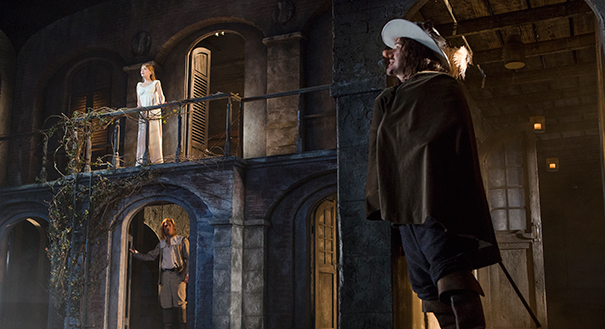The New York Times recently interviewed me about Satchmo at the Waldorf. Here’s part of the story, which will appear in print on Sunday:
Who knew Louis Armstrong had such a mouth on him? And we don’t mean embouchure.
With “Satchmo at the Waldorf,” which opened Oct. 3 at the Long Wharf Theater in New Haven (after an earlier run in Lenox, Mass.), the critic Terry Teachout becomes a playwright. And as such, he seems to have a lot in common with David Mamet. That is, his dialogue flows with four-letter words like Beaujolais at a French cafe. The primary offender and main character is Armstrong himself, jazz trumpeter, singer and postwar America’s first nonwhite sweetheart….
Armstrong’s duality fascinates Mr. Teachout, a jazz aficionado who was born in Missouri and lived in Kansas City in his 20s. “The public Armstrong and the private Armstrong are very different,” he said. But, he emphasized, “they’re both true.”
“When he went out onstage and smiled that big smile and sang ‘Dolly,’ he wasn’t lying,” he continued. “He was a fundamentally largehearted man. But he was also a genius and also a complicated man….”
Read the whole thing here.

 Can “Cyrano” stand to be revived so soon after Mr. Kline did it so well? Probably. Though it’s not a masterpiece in the normal sense of the word, M. Rostand brought off the rarest of theatrical feats: He invented an icon. Even if you’ve never seen or read the play, you probably know who Cyrano was and what he looked like. What’s more, “Cyrano de Bergerac” is a deluxe piece of stage hokum, one whose sincere romanticism–you feel for Cyrano from start to finish–is all but impossible to resist when delivered with the playful panache exemplified by its flamboyant hero. John Simon famously said of “Cyrano” that it is “not a great play, merely a perfect one.” That’s exactly right. It is to verse drama what “Stagecoach” is to Westerns or “Love Affair” is to 10-hankie weepers.
Can “Cyrano” stand to be revived so soon after Mr. Kline did it so well? Probably. Though it’s not a masterpiece in the normal sense of the word, M. Rostand brought off the rarest of theatrical feats: He invented an icon. Even if you’ve never seen or read the play, you probably know who Cyrano was and what he looked like. What’s more, “Cyrano de Bergerac” is a deluxe piece of stage hokum, one whose sincere romanticism–you feel for Cyrano from start to finish–is all but impossible to resist when delivered with the playful panache exemplified by its flamboyant hero. John Simon famously said of “Cyrano” that it is “not a great play, merely a perfect one.” That’s exactly right. It is to verse drama what “Stagecoach” is to Westerns or “Love Affair” is to 10-hankie weepers.